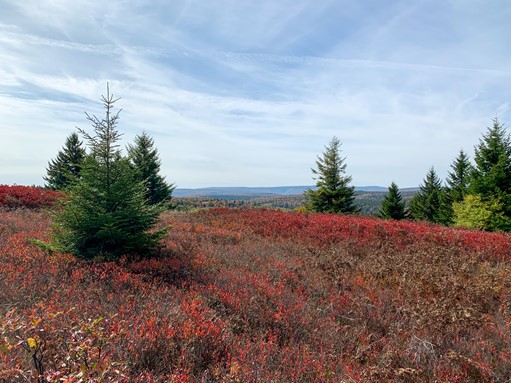
For Fall Break, I headed to the Dolly Sods Wilderness in West Virginia. After the serene drive down iconic country roads, I was rather surprised to arrive at a poorly-kept parking lot overflowing with vehicles.
During the 23-mile loop, I encountered young families with their infants in backpacks, college kids out for day-hikes, and elderly couples on evening strolls. While it was encouraging to see such diversity, the land itself was not in a condition to handle the influx of visitors who had more opportunities to get outdoors due to COVID-19. Off-shot campsites were filled, old trash was left hanging in trees, and new trails shot up hillsides. The last three miles of the hike were through a knee-deep muddy bog created by thousands of people walking and no proper trail upkeep from the Forest Service.
As a native Montanan, I have been rather spoiled with pristine and uncrowded access points to the great outdoors. It is a rare occasion to see another vehicle in the parking lot, much less an overflow of traffic in the late afternoon on a weekday. While the influx of people getting outdoors is encouraging, it has exposed the lack of attention given to our public lands.
Quarantine encouraged many new groups of people to spend more time outdoors, so in order to keep up with the influx of participants, trail maintenance is more important than ever.
According to the Center for Outdoor Ethics, there was a dramatic increase in outdoor recreation from March to August, with over 37% of respondents predicting that their new recreation style will continue even after life returns to normal.
The passing of the Great American Outdoors Act by Congress back in August provides some much-needed support to the Forest Service. The biggest bipartisan land conservation legislation passed in a generation would permanently fund the Land and Water Conservation Fund with $9.5 billion over the next five years. Of that fund, $6.5 billion is earmarked for restoring the National Parks. According to the National Parks Service, this bill will “provide needed maintenance for critical facilities and infrastructure in our national parks, forests, wildlife refuges, recreation areas, and American Indian schools. It will also use royalties from offshore oil and natural gas to permanently fund the Land and Water Conservation Fund.” An additional $900 million will go to funding the main federal land programs (National Forests, Fish and Wildlife, and Bureau of Land Management) and provide grants for state governments to acquire land for recreation and conservation.
Investment in conservation is a great way to create jobs, stimulate the economy, and make space for more people to engage with the outdoors. While the passage of the Great American Outdoors Act will be incredibly helpful in creating these opportunities, the influx of COVID-19 visitors has shown us that preserving our public lands needs to be an ongoing commitment, not just a one-time concern. Access points need to be preserved, trails need to be maintained, and ecosystems cared for if we want to preserve our land for future use.
Reagan Linde is a junior George Washington Fellow studying politics and art.

